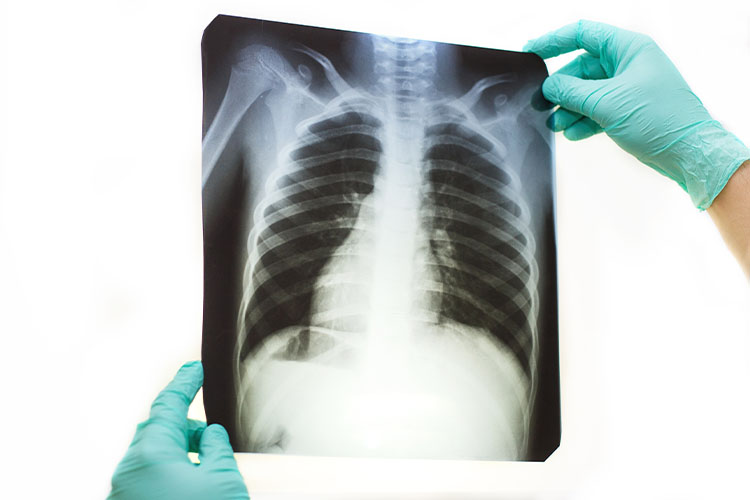Overview
Congenital heart disease (CHD) refers to a range of heart defects present at birth. These defects can affect the heart’s structure, function, or blood flow, leading to potential complications throughout a person’s life. CHD includes a variety of conditions, such as holes in the heart, irregular heart valves, or issues with the heart’s blood vessels. The severity of these conditions can vary widely, with some causing minimal disruption and others requiring immediate intervention.
The causes of congenital heart disease are often unknown, but genetic and environmental factors can play a role. CHD can be diagnosed before birth, at birth, or later in life, depending on the type and severity of the defect. Early detection is crucial, as some forms of CHD may require prompt treatment to ensure healthy development and prevent complications.
Treatment options depend on the type and severity of the defect and may include medications, lifestyle changes, or surgeries to repair the heart or improve its function. Advances in medical care have significantly improved the prognosis for many people with congenital heart disease, allowing them to lead active and fulfilling lives. With early diagnosis, specialized care, and ongoing monitoring, individuals with CHD can manage their condition effectively and reduce the risk of long-term complications.
Table of Contents
When to See a Doctor
Monitoring congenital heart disease (CHD) and recognizing when to seek medical attention are essential for managing the condition effectively. If you or your child has CHD, regular follow-up appointments are necessary to assess heart function and monitor for any changes. Additionally, certain symptoms may indicate complications or worsening of the condition, making it crucial to consult a doctor promptly.
Signs to see a doctor:

- Breathing difficulties or rapid breathing. If you or your child experiences shortness of breath, rapid breathing, or struggles to breathe, it may indicate that the heart is not pumping blood efficiently.
- Bluish skin or lips. Cyanosis, or a bluish tint to the skin or lips, can suggest low oxygen levels in the blood and should be addressed immediately.
- Poor weight gain or fatigue during feeding (for infants). Babies with CHD may struggle to feed and fail to gain weight adequately, which requires medical evaluation.
- Swelling in the legs, abdomen, or around the eyes. Swelling can indicate fluid buildup due to poor heart function, a symptom that needs prompt attention.
- Persistent fatigue or reduced exercise tolerance. If physical activities become increasingly tiring or difficult, it may signal worsening heart function.
Seeking medical care when these symptoms arise can help prevent complications and ensure timely intervention.
What Type of Doctor to Seek
A primary care physician or pediatrician often provides initial care for CHD. However, for ongoing management, a cardiologist specializing in congenital heart disease is typically recommended. For children, a pediatric cardiologist offers expertise in managing heart conditions from infancy through adolescence, while adult patients may benefit from seeing a cardiologist specializing in adult congenital heart disease.
What to Expect from Your Visit to a Doctor

During a visit, the doctor will review your or your child’s medical history, assess any new symptoms, and conduct a physical examination. Diagnostic tests may be ordered to evaluate heart function and structure, including:
- Echocardiogram. An ultrasound that provides images of the heart, helping to assess the structure and function of heart chambers and valves.
- Electrocardiogram (ECG). A test that measures the heart’s electrical activity to detect rhythm abnormalities.
- Chest X-ray. Used to evaluate heart size and detect any fluid buildup in the lungs.
- Magnetic Resonance Imaging (MRI) or Computed Tomography (CT) scans. These imaging tests provide detailed images of the heart and blood vessels to identify any structural issues.
The doctor will use these test results to determine the current status of the CHD and may suggest changes to the treatment plan or additional interventions. Regular follow-up and prompt care can greatly improve the quality of life for individuals with congenital heart disease, ensuring proactive management and reducing the risk of complications.
Congenital Heart Disease Treatment Options

Treatment for congenital heart disease (CHD) depends on the size and location of the heart defect. To help ease the challenges faced by infants with CHD, the following treatment options may be considered:
- Medications. For less severe cases of congenital heart disease, doctors may prescribe medications to help manage symptoms and control blood pressure. Medications like ACE inhibitors, angiotensin II receptor blockers, and beta-blockers are commonly prescribed to lower blood pressure. Managing blood pressure is crucial, as high pressure can worsen the heart defect by increasing the size of the hole. Additionally, doctors may prescribe medications to regulate irregular heartbeats, improving heart function and reducing strain on the heart.
- Open-heart surgery. This is one of the most common procedures used to close heart defects. In open-heart surgery, the surgeon opens the patient’s chest to access and repair the hole in the heart using specialized surgical tools. This procedure allows direct access to the heart, making it easier for the surgeon to accurately close the defect.
- Cardiac catheterization. Cardiac catheterization offers a minimally invasive alternative to open-heart surgery for closing heart defects. In this procedure, the patient is given a local anesthetic, and a small incision is made in the groin area. A thin catheter (tube) is inserted through a blood vessel in the groin, which connects to the heart. The doctor then threads the catheter up to the heart and uses another tube equipped with tiny surgical tools and a camera to close the hole. This technique avoids the need to open the chest and can result in a quicker recovery time.
- Heart transplant. In severe cases where the damage caused by congenital heart disease is extensive, a heart transplant may be considered if a suitable donor heart is available. During a heart transplant, the damaged heart is replaced with a healthy donor heart, providing a new opportunity for normal heart function and improved quality of life.
These treatment options allow for comprehensive management of congenital heart disease, helping to address both mild and severe cases. Early diagnosis and prompt treatment are essential in improving outcomes and enabling individuals with CHD to lead healthier, more fulfilling lives.
Congenital Heart Disease Prognosis
The prognosis for congenital heart disease (CHD) has improved significantly over the past few decades due to advancements in medical treatments and surgical interventions. Many individuals with CHD now lead full, active lives, with some requiring only minimal medical intervention after initial treatment. However, the long-term outlook depends largely on the type and severity of the heart defect, as well as the individual’s overall health and access to ongoing care.
In mild cases of CHD, where the heart defect does not significantly affect heart function, the prognosis is generally excellent. These individuals may have minimal symptoms and require routine monitoring to ensure no complications develop over time. For moderate to severe cases, particularly those requiring surgical correction or lifelong medication, the prognosis can vary. Some may experience reduced exercise tolerance or need ongoing care to manage symptoms and prevent complications.
Regular follow-up with a cardiologist is essential, as even successfully treated CHD can lead to complications later in life, such as arrhythmias, heart valve issues, or heart failure. Advances in adult congenital heart disease care have also increased life expectancy for those born with CHD, enabling more adults with CHD to live independently and achieve a high quality of life.
With proactive management, early intervention, and continuous care, individuals with congenital heart disease can often maintain a good quality of life and prevent or minimize long-term complications.


